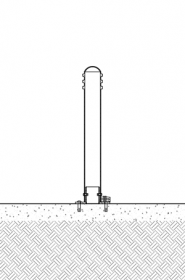Installing Collapsible Bollards using Fold Down Mountings
Fold down mountings, also known as collapsible mountings, can be used with all R-7900 or R-8900 bollards. Ideal for areas with mixed traffic, collapsible bollards control access to restricted areas. They require no additional storage and can be quickly secured with heavy-duty padlocks. They offer practical solutions for service roads, reserved parking areas, and designated areas for maintenance, delivery, or emergency vehicles. Fold-down mountings can be surface mounted to existing concrete surfaces. They are available in galvanized steel or powder coated steel.
PARTS LIST
|
# |
PART |
QTY |
|---|---|---|
|
1 |
Fold Down Bollard |
1 |
|
2 |
Fold Down Base |
1 |
|
3 |
3/8″ Hexagon Socket Button Head Cap Bolt |
2 |
|
4 |
3/8″ Hex Nut Nylon Lock |
2 |
|
5 |
1/2″ Hexagon Socket Button Head Cap Bolt |
4 |
|
6 |
1/2″ Stainless Steel Washer |
4 |
|
7 |
1/2″ Drop-in Concrete Insert |
4 |
|
8 |
Padlock (optional) |
1 |
INSTALLATION EQUIPMENT
|
5/8″ Masonry Drill Bit |
1/2″ Insert Setting Tool |
|
9/16″ Wrench |
5/16″ Hex Key |
|
7/32″ Hex Key |
Chalk |
|
Hammer |
Hammer Drill or Rotary Hammer |
|
Broom/Pressure Washer |
Vacuum |
|
Level |
Measuring Tape |
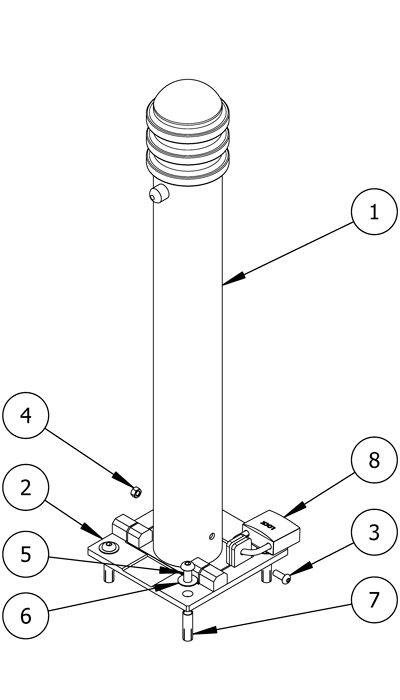
NOTE
- To protect the finish, keep bollards in original packaging until the exact moment of installation.
- Handle with care to avoid scratching or damaging bollard surfaces as abrasions will lead to rust.
- Once scratched, bollards cannot be repaired to original form without re-finishing the entire surface.
Before installation
Check for hazards
Always check for hazards such as water pipes, gas lines, and underground wiring before drilling.
Clean the surface
Dirt and debris can affect the line of sight and disrupt placement of the bollards.
Use a broom or pressure washer to clean the concrete surface prior to bollard installation.
Study the site plans
Site plans are generally created by the architect of the project.
Refer to site plans to locate and mark the precise center point of each bollard.
Create hole markings
Place the fold down base over each center point marking so that the base’s middle coincides with the center point.
Use chalk to create drill-markings for each bolt.
For secure installation, ensure there is a minimum radius(1) of solid concrete around each hole for the drop-in insert.
Remove the base.
Note: Be sure to make any necessary adjustments to the orientation now. Once drilled and installed, there is no way to rotate the base.
Drill the holes
Create pilot holes
Tap pilot divot holes in the center of each mark.
This will prevent the hammer drill or rotary hammer from drifting while boring the holes.
Set the depth control on the Hammer Drill (or Rotary Hammer) to 2″
If depth control is not available, mark 2″ on the masonry bit.
Drill the holes
Drill holes with a 5/8″ diameter and 2″ depth.
Drill on high speed, using the hammer function if available.
Check the masonry bit often to ensure it remains free of debris.
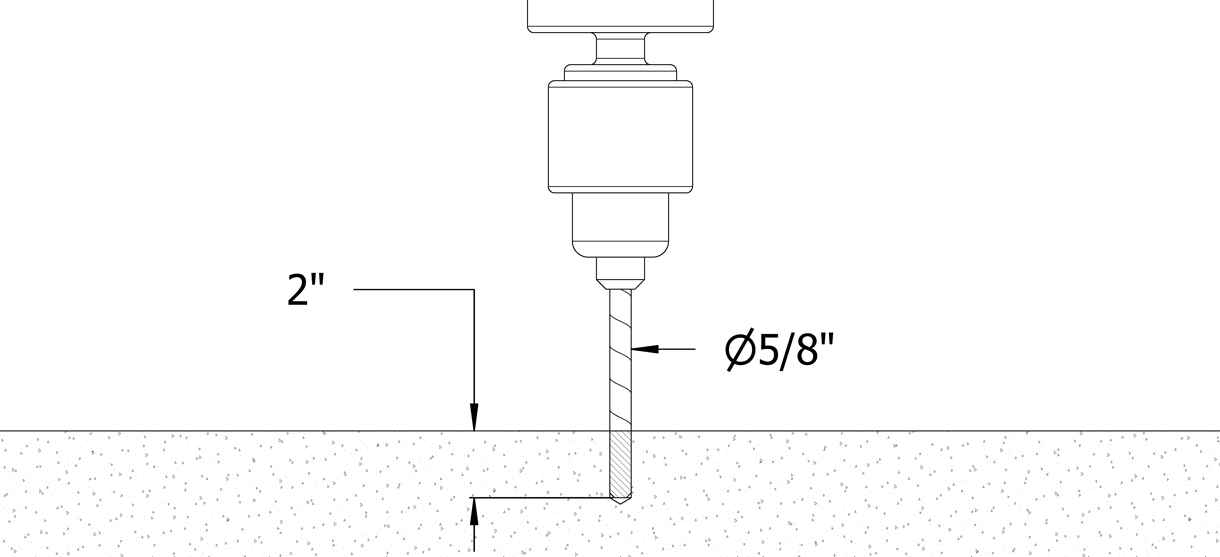
Secure the fold down base
Clear and clean the holes
Clear the holes of all debris and/or standing water using the vacuum.
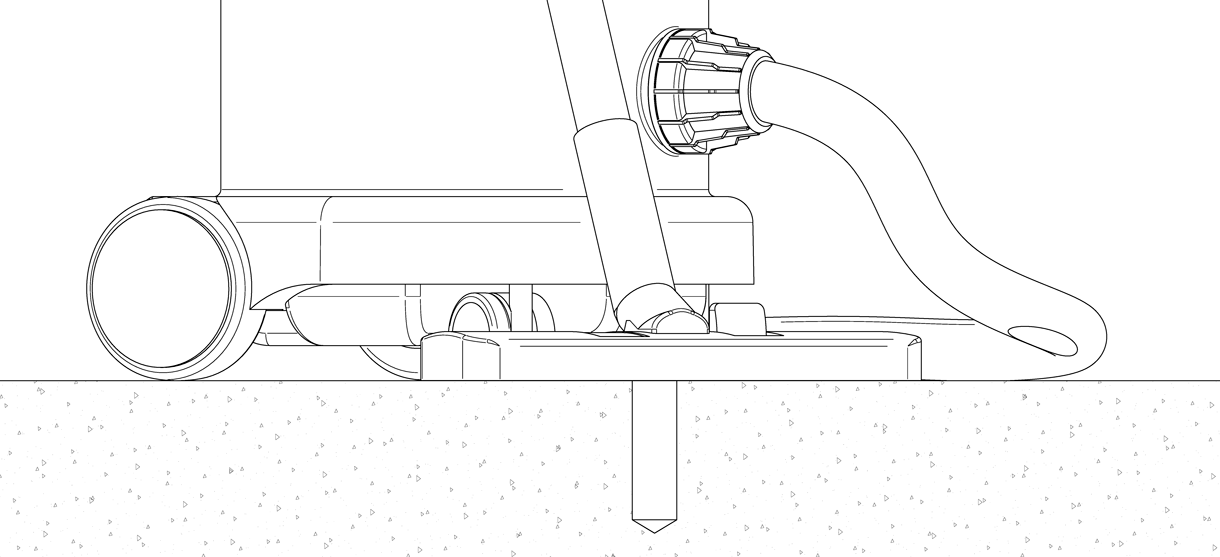
Tap the drop-in insert into each hole
With the slotted end facing down, drive the drop-in inserts (A) down until the top sits flush with the surface of the concrete.
Set the concrete insert
Insert a setting tool (B) into each hole, then hammer down.
If a proper setting tool is not available, an equivalent flat-end punch can be used.
This will cause the internal expansion plug to set the concrete insert in place.
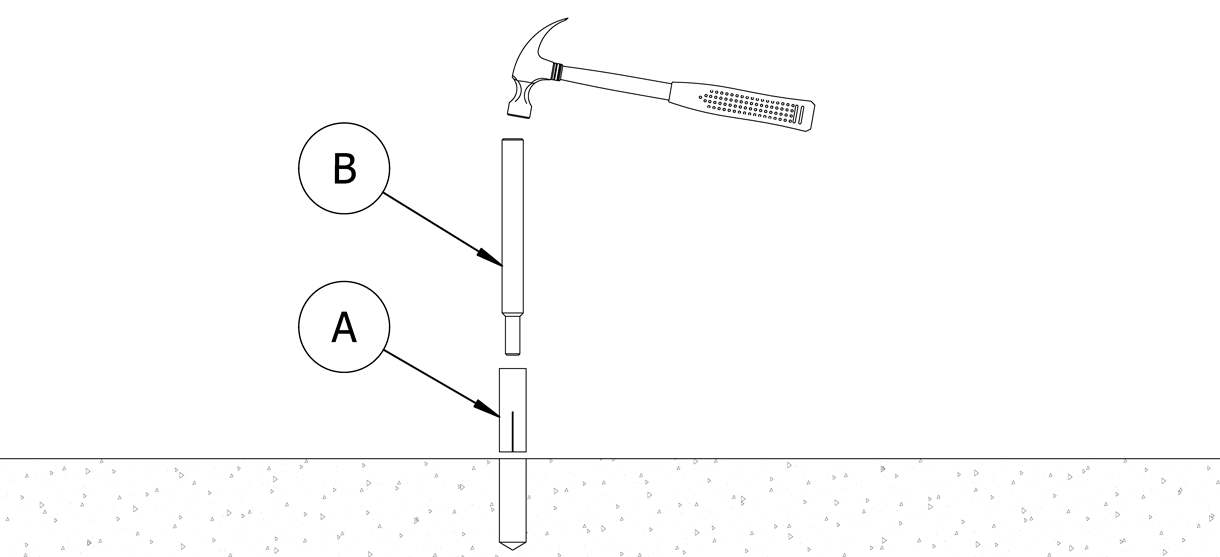
Set the fold down base over the holes
Carefully set the fold down base over the installation position so that the base’s bolt holes are directly on top of the drilled holes and concrete inserts.
Secure the fold down base
Place the washers over the holes on the base and set the bolts into place.
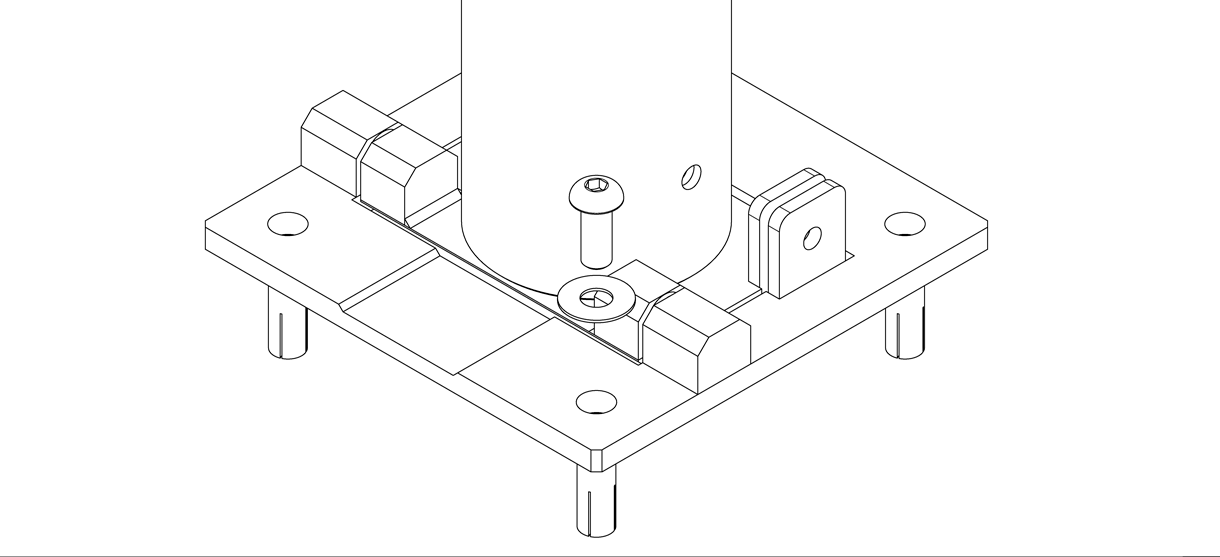
Use a hex key to tighten the bolts until secure. Tighten bolts evenly in a crisscross pattern.
Attach the padlock
With the bollard in an upright position, attach the padlock to the fold down base.
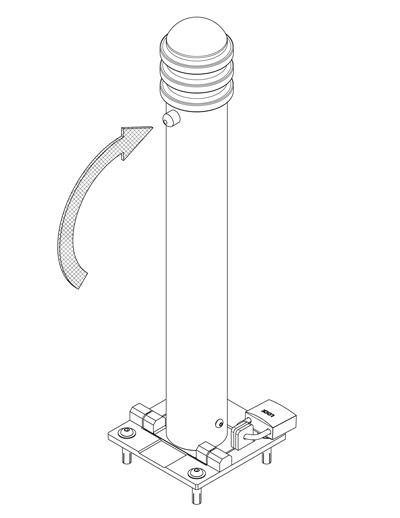
Inspect
Inspect the installation
From a distance, examine the plane of view.
Ensure the bollard is plumb to the surface, and the surface is flat.
Check the bollard for any signs of surface damage
Abrasions should be covered as soon as possible to prevent rust and ensure the proper life of the bollard. For damage repair or other servicing needs, please contact Reliance Foundry’s sales department.
Care and maintenance
Reliance Foundry manufactures its products to the highest design standards to ensure their durability. Reliance Foundry’s bollards are finished with long-lasting powder coating. In most North American environments, routine inspections and cleaning will ensure that bollards retain their aesthetic appeal. Proper care and maintenance are required to maintain the finish and ensure a full service life.
1. Concrete insert manufacturers such as www.ucanfast.com recommend specific measurements for minimum radius.
